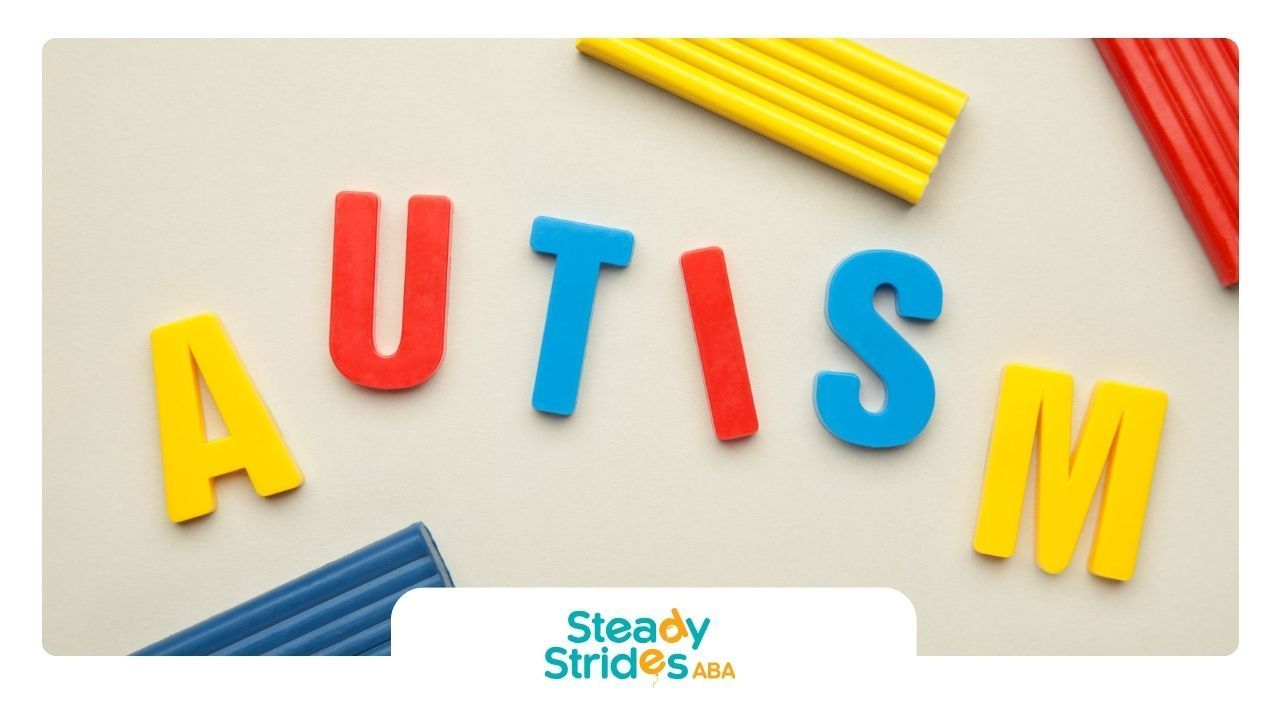Have you ever thought about why some people have a strong reaction to certain touch sensations? Tactile sensitivity happens when people feel touch more than others do. It is often a part of sensory processing disorder. Many things can trigger it. These include how some fabrics feel, the texture of certain foods, or even a simple touch. It can make daily life harder for both kids and grown-ups who have these sensory issues. People often find it difficult to do some everyday things. When we learn more about tactile sensitivity and sensory processing, we can find better ways to help these people. This can make their lives much better.
Defining Tactile Sensitivity
Tactile sensitivity happens when people have strong or changed reactions to touch sensations. This can make some textures or feelings feel uncomfortable. Some people find that this condition affects their daily life. It can make things like picking out clothes or eating harder. Sensory issues like tactile hypersensitivity come from the way the sensory system handles information. Not everyone feels these things the same way. One person may try to avoid light touches, while another may feel bad about some fabric textures. Some may react strongly to things that happen in their daily life because of this.
What Is Tactile Sensitivity?
Tactile sensitivity, which people also call tactile defensiveness, is when someone has a much stronger reaction to touch sensations than most people. While many of us do not think about things like tags on clothes or soft touches, those with touch hypersensitivity can have a big response. Their sense of touch may make them feel overwhelmed. Because of this, they try to stay away from things that seem harmless to others.
Light touch, like when a feather brushes your skin, often makes people with tactile sensitivity feel uncomfortable. This problem comes from the way their brain handles sensory information. For example, how the body feels pain or vibration can be different. Things we use every day, such as shoes or eating utensils, can seem wrong to them. These everyday items make simple tasks in daily life much harder.
People’s reactions to touch inputs are not all the same. One person might like touch pressure, while another might quickly pull away from a light touch. Their sense of touch changes what works for them in each moment. Because there are so many ways people experience this, it is important to create solutions that fit each person. This can help make sure they feel good and take part more easily in daily life.
How Tactile Sensitivity Differs from Other Sensory Issues
Even though tactile sensitivity is part of sensory processing differences, it is mainly about touch sensations, not sight, hearing, or smell. This is different from things like loud noises, which can bother people with sound issues. With tactile hypersensitivity, the main problem is with textures or how something feels against the skin.
Tactile sensitivity often shows up as not liking certain clothes, everyday touch sensations, or food textures. It is not the same as other sensory issues, which are about other kinds of things we sense. The feeling can be so strong that people may want to avoid contact whenever they can.
Occupational therapists often use sensory integration to spot touch-related problems and set them apart from larger sensory processing disorders. Knowing these details helps them give advice that is right for that person. This way, they can help people handle their own tactile triggers and feel more at ease with everyday touch sensations, food textures, and other sensory issues.
The Science Behind Touch Sensation
Touch sensations have a big part in how people react to the world. The nervous system works to make sense of signals from touch. It helps us know the difference between things like pressure, temperature, or a light touch. Sometimes, when the sensory system does not work right, people may get strong feelings from even a small or light touch. This is called tactile sensitivity, and it can make their reactions to touch much stronger than normal.
When we look at the science behind touch sensations, we start to get why occupational therapy and ideas like proprioceptive sensory inputs are helpful. These things can help people manage their reaction to touch. The nervous system has a lot to do with how everyone feels the world and how they react to different sensory inputs in the environment.
How the Nervous System Processes Touch
The nervous system is like the main part of the body that takes in all touch-related feelings. It handles sensory information and helps the body tell the difference between things like touch pressure, light touch, and pain. People who have tactile sensitivity find that their sensory system does not work the way it should. For them, the body sometimes think safe or harmless things are threats.
Touch signals move on different paths to the brain. Then, the brain decides what to do. Some kinds of touch, like light touch, can be hard for people who have this problem. Their body may feel sensory overload when they’re exposed to things like this. At the same time, touch pressure might not feel as bad to them.
This shows how the body’s different sensory systems can work together. Occupational therapy often focuses on these differences. The goal is to help people with tactile defensiveness get used to touch in daily life. In the end, this makes sensory information and touch feel less tough for them.
Sensory Integration and Its Role in Tactile Sensitivity
Sensory integration helps people manage touch sensitivity. It brings together different sensory inputs and the right ways to react to them. Techniques such as sensory integration therapy work to make the sensory system better at handling touch sensations.
The use of proprioceptive inputs, like movement or deep pressure, can help someone better control how they feel. Regular activities that give sensory input, for example, weighted blankets or objects with textures, can make people less sensitive over time.
Occupational therapists offer sensory-based solutions that fit each person. These methods help bring together more than one sense so the sensory system works as one. This lowers sensitivity problems and makes it easier to handle daily tasks for most people.
Common Signs and Symptoms
Recognizing tactile sensitivity means you need to look out for certain signs. People with this often do not like some kinds of fabric, and they might react strongly to just a simple touch. Children and adults may avoid some daily tasks and show signs of tactile defensiveness or get a sensory overload.
Physical signs of this problem can be not feeling right with fabric textures, looking uncomfortable with food textures, or overreacting to even a light touch. These kinds of symptoms can stop someone from doing their daily activities. It can also hurt their feelings or how they get along with people. If you look out for both how people act and signs on the body, you can spot touch hypersensitivity early. This will help you give the right support when it is needed most.
Behavioral Indicators in Children and Adults
Tactile defensiveness shows up in the way people act every day. Both children and adults can have sensory overload from touch. When this happens, they often pull away or try not to touch things.
Some common signs of tactile defensiveness are:
- Struggling when someone tries to brush or cut their nails because they don't like how it feels.
- Feeling bothered by how clothes feel or upset by tags in clothes.
- Not liking to touch things that are messy, like paint, glue, or sand.
- Saying no to hugs or not liking casual touches like handshakes.
- Looking uneasy when eating food that is lumpy or mixed together.
Autistic individuals often have even more signs of tactile defensiveness because they feel sensory overload more than other people do. If caregivers and occupational therapists understand these signs, they can help with plans that make people feel better and help them get used to touch in their everyday lives.
Physical Reactions to Everyday Textures and Touch
Physical reactions to things you touch are often seen in people who have touch hypersensitivity. In daily life, things like fabric textures or a surprise touch can cause strong responses.
Problems with food textures are common. Many people stay away from foods that feel grainy or are mixed together, like some yogurts or casseroles. Even regular tasks such as brushing your hair can cause physical pain. Clothing seams, tags, and hugs can make touch hypersensitivity worse for many people.
All of these reactions show there are sensory processing issues that can affect daily life. Occupational therapy can help ease the discomfort caused by these triggers. This helps people feel more at home as they take part in the world around them.
Who Can Experience Tactile Sensitivity?
Tactile sensitivity can affect people with autism spectrum disorder, sensory processing differences, or ADHD. This does not just happen to children. Adults get tactile hypersensitivity too. Many times, their past development plays a part in this.
Children may have trouble with things like eating or getting dressed because of sensory cues. Grown-ups also face problems with the same things in their daily lives. Knowing that tactile sensitivity and sensory processing differences can happen at any age helps doctors and therapists make better plans for treatment.
Prevalence Among Children
Children are usually the first to show signs of tactile sensitivity, especially when they are doing things like self-care or being around others. This hypersensitivity can affect how they feel about wearing the clothes they have or when they play with things like sand or playdough during group time.
Occupational therapists use sensory processing tools to spot what sets off these reactions and how it affects the child’s day. The way children stay away from certain things gives clear signs of trouble—this can be when they will not wear some types of fabrics or say they feel bad during any touch-related activities.
When the right help is given, children can get better with strategies made just for their needs, like tactile desensitization. Noticing these signs early helps children do well in their feelings, with friends, and when growing up.
Tactile Sensitivity in Adults and Neurodiverse Populations
Adults dealing with touch hypersensitivity face problems in many parts of life. These issues show up at home, with friends, and at work. Some people feel strong reactions to things like fabric or normal touches. It is much like what some children feel, but for adults, the problems can spread to even more areas of life.
Many neurodiverse adults, especially those with autism spectrum disorder, have more problems with touch sensations. This is a common part of sensory processing differences. It can make daily tasks, self-care, and social situations hard, especially where random touches might happen.
One helpful way to cope is through sensory integration therapy. This kind of therapy helps them get used to touch in a safe way. It makes touch feel less strong, so adults find it easier to manage tough situations and do better when they have to deal with touch in their lives.
Causes and Contributing Factors
Tactile sensitivity comes from a mix of things like your body, your genes, and the world around you. These things work together to form how the sensory system and sensory processing work. There are sensory processing differences that you can inherit, and your early experiences in life also make a difference.
For each person, tactile sensitivity shows up in a different way. It can depend on how sensory inputs are handled by the sensory system or how the environment changes around them. When you understand what causes touch hypersensitivity, you can use the right therapies. This also helps with better profiling during diagnosis, so that touch hypersensitivity can be managed better over time.
Biological and Genetic Influences
Some people react differently to touch sensations because of genetics. The way a person's body handles sensory inputs, like a light touch, can very often be affected by genetic makeup. This often leads to tactile hypersensitivity. It means some people feel things are too rough, itchy, or uncomfortable when most people would not notice.
Researchers are still working to find which genes play a part in strong reactions to touch. If we know about family history and genes, it can help doctors make better decisions. This can also help those who work in occupational therapy to create plans that fit each person better.
But it is not just genes alone. Biology also adds to the way people notice touch-based sensations. Nerve signals in the body may work differently. If someone has more sensitive nerves, touch sensations seem much stronger. That is why many people who deal with tactile hypersensitivity turn to occupational therapy for extra help.
Environmental and Developmental Triggers
The environment plays a big part in how the sense of touch grows. Early on, when people have different touch sensations, the sensory system learns how to deal with them. These moments help shape all the ways we feel and react to touch later on. Bad things, like rough or uncomfortable touch, can make a person get more upset by similar feelings later in life.
Some things can set off reactions in the sensory system. For example, there can be sensory overload when there are too many people around or there is a lot of touching in the place. This is not good for a person's feelings. That is where occupational therapy helps. It uses ways to make people less bothered by touch sensations and work on touch desensitization.
Knowing how the environment changes people's feelings helps to deal with touch hypersensitivity when it happens in real places such as the school, at home, or while people are at work. It also helps build spaces that help people and fit what each of them needs.
Impact on Daily Life
Living with tactile sensitivity can change the way you handle everyday life. For many people, doing some daily tasks gets harder. For example, getting dressed can be tough. Certain fabrics or types of clothes, like seamless clothing or short sleeves, can make someone feel very uncomfortable.
Tactile defensiveness can also make eating hard. Many people find the feel of different food textures difficult to deal with. This can stop them from getting the food they need and enjoying meals with other people.
These sensory processing issues often lead to more stress and worry. They can hurt a person's mood and stop them from joining in social activities. That is why it is important to find ways to work through these challenges and make everyday life a bit easier.
Challenges with Clothing, Food, and Routine Activities
It can be hard to find the right clothing for people with tactile sensitivity. The feel of fabric textures and how clothes fit, like if you wear long sleeves or short sleeves, can cause real discomfort because of tactile defensiveness. Some food textures can also be tough to handle. Some people have a hard time eating foods with certain textures, so they may not eat a wide range of foods. Simple things in everyday life, like brushing your teeth or using a fork and knife, can be tough because of sensory processing differences. Making a supportive environment that helps with these issues can make a big difference in the everyday life of people who deal with sensory issues.
Social and Emotional Effects
Finding your way in social settings can be hard if you have tactile sensitivity. Everyday touch sensations, like hugs or handshakes, may feel too much or cause sensory overload. Because of this, you might feel anxious and stay away from other people. This can hurt your self-esteem and relationships.
Also, when touch sensations feel too intense, you may react with frustration or irritability. Some textures or pressure on your skin might make you upset. It is important to understand these reactions. Doing so helps to build a supportive environment where you can feel better and take part in social life more easily. When people know what others go through, they can help everyone feel included and safe.
Approaches for Coping and Support
Creating a supportive environment is very important for people who have tactile sensitivity. You can use some simple ideas, like wearing seamless clothing and picking fabric textures that feel comfortable. These changes can help make everyday life better and easier. Adding heavy work activities, such as pushing or pulling heavy things, can also help. This kind of action gives proprioceptive input, which may help control the way the senses react.
Therapeutic help, like occupational therapy, is helpful in these cases. These services work on improving sensory integration. People might use firm massage or sensory integration therapy to feel better. With these approaches, it is easier for a person to handle daily tasks. In the end, this leads to a better experience in everyday life.
Practical Strategies for Home, School, and Work
Creating a supportive environment means using simple ways that fit each person. At home, you can try seamless clothing and weighted blankets. These give gentle tactile input and can make you feel more comfortable. In school, it helps to take frequent breaks. This gives time to rest and stops sensory overload, so you can better control how you feel. At work, using soft fabric textures makes the workspace nicer and can help people get more done. Adding heavy work, like carrying or pushing things, gives good proprioceptive input too. This can reduce touch problems and make daily tasks easier for everyone.
Therapeutic Interventions and Professional Help
Effective therapeutic interventions are very important when helping with tactile sensitivity. In most cases, occupational therapy is used to make custom strategies for people who have sensory processing differences. One common approach is sensory integration therapy, which can help people slowly get used to new fabric textures and other feels. This can make them stronger when faced with sensory overload. With a set plan, therapists use interventions like having a child touch different fabric textures. They can also add proprioceptive input and other activities. All of this helps make a supportive environment that is right for the child’s needs.
Conclusion
Understanding tactile sensitivity is important to help make a supportive environment for people who have it. When you know about sensory processing differences, you can use the right methods that help these people do better in their daily activities. Using things like sensory integration therapy and occupational therapy can make it easier to deal with the challenges that come with tactile defensiveness or if someone is very sensitive to touch. Making an environment that works for them helps manage sensory input. It also helps people feel better emotionally and makes it easier for them to join in with others. This makes life better for those who are affected.
At Steady Strides ABA, we know that tactile sensitivity isn’t just about textures—it’s about comfort, safety, and trust. As the best ABA provider in Texas, we help children navigate sensory challenges with personalized strategies that build confidence in everyday environments. Our team meets each child where they are, turning small steps into steady progress. If your child pulls away from touch or struggles with textures, reach out to Steady Strides ABA and start building calm through care.
Frequently Asked Questions
Can tactile sensitivity be outgrown?
Some people might feel less touch sensitivity as they get older. But, many keep this sense all their life. The way this changes can be different for each person. Therapy, how often you use your sense of touch, and the ways you handle changes can all play a part. Still, the results are not the same for everyone.
Is tactile sensitivity always linked to autism or ADHD?
Tactile sensitivity does not only happen in people with autism or ADHD. It can be found in individuals who have other conditions. Some people even have it without any known condition. There are a number of things that can lead to this. Sensory processing issues and anxiety are just a few of them. Many people can experience tactile sensitivities from sensory processing disorder, anxiety, or other factors.
What are simple ways to help a child with tactile sensitivity?
To help a child who is sensitive to touch, you can make the space around them more comfortable. Use soft fabrics for the things they use every day. Let them have fidget toys, and plan some calming activities for them. Try to slowly introduce them to new things they can touch. When they try something new, give them praise to help them feel good and more confident each time.
How is tactile sensitivity diagnosed?
Tactile sensitivity is often found by doing different clinical tests, asking questions, and watching the child or person by healthcare professionals. Parents or teachers can also give their view to help see what is going on. Standardized tests may show how severe it is and how it affects daily life. This can help choose the right treatment steps.
Are there effective therapies for managing tactile sensitivity?
Yes, there are many ways to help people who have problems with touch. Occupational therapy and sensory integration are two good options. Behavioral therapies can also be useful. These methods help people change how they react to things they feel on their skin. With care that fits each person, daily life can get much better for those who have tactile sensitivity. Their quality of life can also improve a lot.
Sources:
- https://pubmed.ncbi.nlm.nih.gov/7451834/
- https://www.griffinot.com/what-is-tactile-defensiveness/
- https://www.autism.org.uk/advice-and-guidance/topics/sensory-differences/sensory-differences/all-audiences
- https://wfot.org/about/about-occupational-therapy
- https://www.ncbi.nlm.nih.gov/books/NBK559155/
- https://my.clevelandclinic.org/health/articles/proprioception












